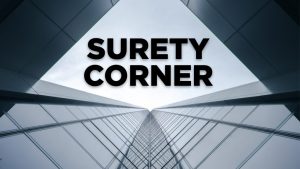Global construction is forecast to grow to US$15.5 trillion by 2030, with a projected near term Compound Annual Growth Rate (CAGR) in Canada of 8.5 per cent by 2024.
Alongside this growth comes the increased risk of corruption. High inflation, tight margins, international instability and the ongoing COVID pandemic are other contributing factors.
“Dishonesty and corruption seriously affect various businesses, and those within construction are particularly vulnerable,” writes Paul Wright, senior adviser of forensic technology and investigations at Accuracy, a global forensics consultancy. “Malpractices like extortion, bribery and fraud in construction projects can have a damaging effect on developing as well as developed countries.”
Much of the risk is due to the complexity of the construction process itself and its multiple supply chains, project partners, contractors and subcontractors.
The legal, governance, financial or reputational risks attached to any alleged acts of corruption require quick and effective response, Wright says.
“It can be a complicated process for an organization, particularly if they do not have the requisite investigative capabilities, e.g. digital forensics specialists, interviewing skills, time, policies, procedures, processes, best practices and do not follow or understand investigative best practices.”
Ideally, contractors, consulting engineers and any organizations providing equipment, materials, work or services, should have a protocol in place to investigate any suspected corruption, Wright says, so as to protect the interests of the accused, the business and its stakeholders.
It begins with having a process under which whistleblowing and other disclosures can be followed up and be seen to be followed up both effectively and diligently, he says.
“Digital forensics and data analytics technology should help identify procurement and finance systems red flags.”
Once an accusation of corruption has been made, Wright puts forward suggestions on how a company should respond. First, someone not connected with the issue should carry out the investigation, be that a risk manager, a member of the legal team, an appropriate manager or a qualified third party.
“The person investigating should be given relevant authority, resources and access by the board to enable the investigation to be effectively carried out. The investigation should promptly establish the facts and collect all necessary evidence,” Wright says.
The objective of this fact-finding mission is to establish whether “inappropriate conduct” occurred and by whom, whether the actions were a violation of the law or company policy and if there is a need for self-disclosure to a regulator.
“An investigation must be perceived as thorough, independent, analytical and timely,” Wright says. “Effective investigations can help identify the relevance of the allegation, assess the potential impact on the business, and enable the organization to take corrective, educational and remedial actions based on the intelligence and evidence gathered.”
“Efforts to curb corruption have increased significantly over the past two decades, albeit with mixed success,” write Sharon Vogel and Emira Bouhafna of Singleton Urquhart Reynolds in Toronto.
And while they note the high level of corruption in more than two-thirds of the 180 countries surveyed in Transparency International’s 2017 Corruption Perceptions Index, Vogel and Bouhafna also point out Canada has had its share of domestic corruption issues as well.
Most memorable came as a result of the 2011 Charbonneau Commission that spanned more than 260 days. Its final 2015 report described massive amounts of corruption and collusion in the Quebec construction industry and made 60 recommendations to address the problem.
Corruption concerns should not be limited to large companies. Organizations of all sizes need to give the matter of corruption due consideration. Scaling investigation protocols down to SMEs is basically a matter of logistics.
Initially, determining the size and scope of any investigation will likely be unknown, Wright told the Daily Commercial News.
“The victim company has to ask itself a number of questions: ‘Can we afford the financial loss? What will be the reputational damage? Do we need to set an example to employees and to those we do business with? What is our risk appetite for doing something or doing nothing?’”
John Bleasby is a Coldwater, Ont.-based freelance writer. Send comments and Legal Notes column ideas to editor@dailycommercialnews.com.








Recent Comments
comments for this post are closed